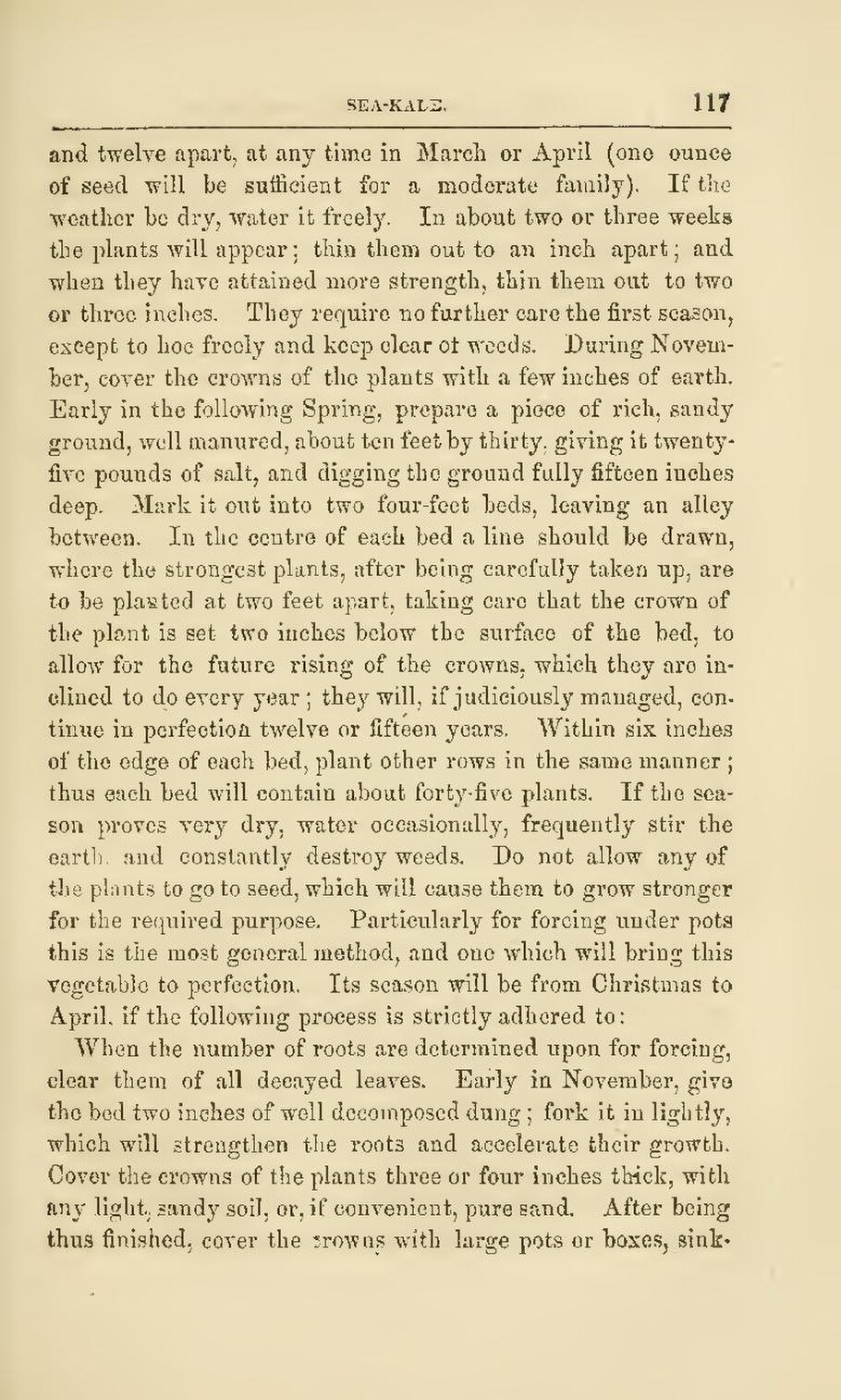and twelve apart, at any time in March or April (one ounce of seed will be sufficient for a moderate family). If the weather be dry, water it freely. In about two or three weeks the plants will appear; thin them out to an inch apart; and when they have attained more strength, thin them out to two or three inches. They require no further care the first season, except to hoe freely and keep clear of weeds. During November, cover the crowns of the plants with a few inches of earth. Early in the following Spring, prepare a piece of rich, sandy ground, well manured, about ten feet by thirty, giving it twenty-five pounds of salt, and digging the ground fully fifteen inches deep. Mark it out into two four-feet beds, leaving an alley between. In the centre of each bed a line should be drawn, where the strongest plants, after being carefully taken up, are to be planted at two feet apart, taking care that the crown of the plant is set two inches below the surface of the bed, to allow for the future rising of the crowns, which they are inclined to do every year; they will, if judiciously managed, continue in perfection twelve or fifteen years. Within six inches of the edge of each bed, plant other rows in the same manner; thus each bed will contain about forty-five plants. If the season proves very dry, water occasionally, frequently stir the earth and constantly destroy weeds. Do not allow any of the plants to go to seed, which will cause them to grow stronger for the required purpose. Particularly for forcing under pots this is the most general method, and one which will bring this vegetable to perfection. Its season will be from Christmas to April, if the following process is strictly adhered to:
When the number of roots are determined upon for forcing, clear them of all decayed leaves. Early in November, give the bed two inches of well decomposed dung; fork it in lightly, which will strengthen the roots and accelerate their growth. Cover the crowns of the plants three or four inches thick, with any light, sandy soil, or, if convenient, pure sand. After being thus finished, cover the crowns with large pots or boxes, sink-
